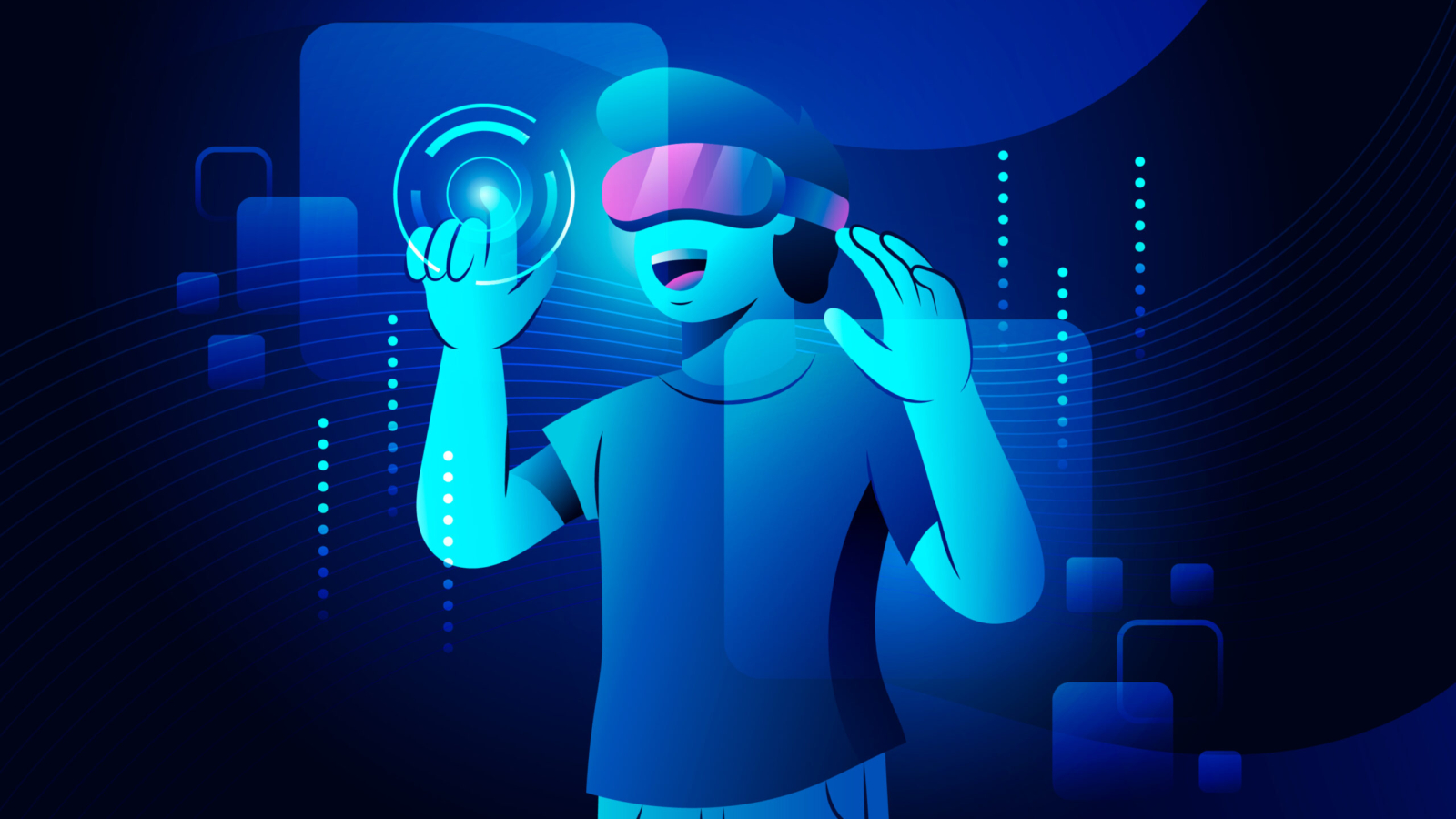Virtual reality [VR] was one of the first technologies developed in the 1960s. This high-end simulated experience developed by using digital technology and software to deliver real-world experience is making a comeback in many aspects of our daily lives today. Visual immersion is provided via headsets and glasses, while tactile sensations are provided by handhelds and wearables. Many top companies, such as Microsoft, Sony, and Intel, are already using virtual reality to boost their digital marketing efforts.
Anyone using virtual reality equipment can explore the virtual world and interact with virtual objects or structures.
Virtual reality merges video and audio feedback, but force feedback and other sensory types can be added with the help of haptic technology. People are submerged and able to speak within virtual worlds rather than viewing a display in front of them. The machine becomes a facilitator for these artificial worlds by reproducing numerous senses such as hearing, vision, smell, and touch.
Here are some benefits of virtual reality:
It Is Convenient to Use
Virtual reality is quite useful in everyday tasks such as shopping. Let’s say you’re looking for interior design ideas for your home. However, simply looking at the designs does not make deciding on a great match any easier, resulting in a perplexing predicament. Such ambiguity can be easily resolved by combining the designs and decor of your home by utilizing virtual reality to make an informed selection.
Beneficial for The Retail Industry
Both online and in-store, virtual and augmented technologies are game-changers in the retail industry. They enable online retailers to create a more engaging experience that mimics actual retail establishments. Virtual reality in retail space can have a meaningful influence as shop design becomes much more intelligent. Kinect fitting rooms at clothing businesses could be a great way to improve the look of your store.
In-Store AR Navigation is a new way to get around stores. Customers can use this smartphone app to rapidly locate locations where requested items are available. AR-overlaid product information is another popular app: aim your phone camera at things to see extensive information. Retail marketing becomes interactive and practical when digital technologies are used.
Makes the Learning Environment Safe
Virtual reality training has the advantage of allowing learners to interact with virtual sceneries and hazards in a safe environment. Virtual reality is a wonderful tool for experiencing learning in complex areas that would otherwise be too risky, expensive, or harmful to study otherwise. Learners can make judgments that have no bearing on the company’s equipment, employees, or customers. A learner can, for example, practice what to do in the event of a robbery by making various decisions that affect the robber’s activities.
Produces One-Of-A-Kind Customer Experiences
One of the most significant benefits of AR is that it allows for the creation of unique digital experiences that combine the finest of both the digital and physical worlds. Furthermore, no external hardware or software is required to relish the experience.
To enjoy AR, smartphones and mobile apps are sufficient. In fact, recent advances in augmented reality have made it feasible to have immersive experiences using web browsers.
How do AR experiences differ from other types of experiences? The most prevalent audio-visual experiences we are aware of can be found in either the physical or digital realms. For one thing, augmented reality combines the two realities. It creates a mirage effect by layering digital components on top of real components.
Enhancement of Sensation
Not everyone who has hearing or vision loss has an entire loss. The majority of them have only partial vision loss and can benefit from AR or VR applications that improve their senses.
AR-enhanced hearing aids are one example. These can identify and magnify the sound that the listener wishes to focus on. Another example is colour-blindness-correcting AR glasses. In terms of virtual reality, there’s Vision Buddy, a television-watching technology that helps those with limited vision see better.
Conclusion
Finally, one must comprehend the meaning of the virtual world and its characteristics after learning about all the benefits and drawbacks of VR technology. To summarise, virtual reality can be amazing and informative, and it can also help people relieve stress by allowing them to visually visit another planet.

